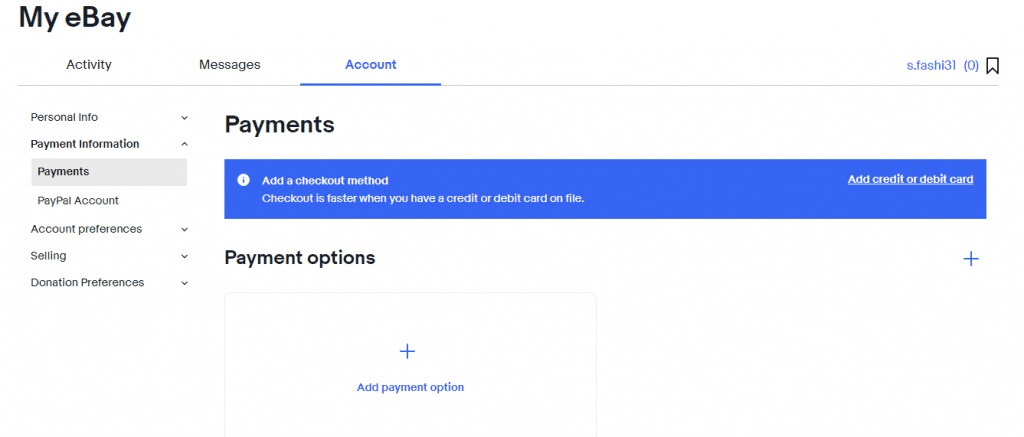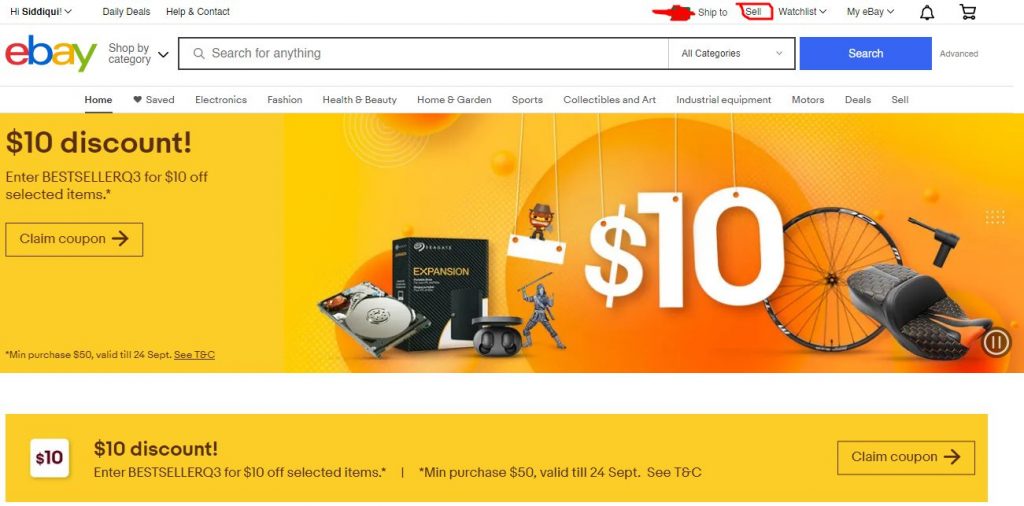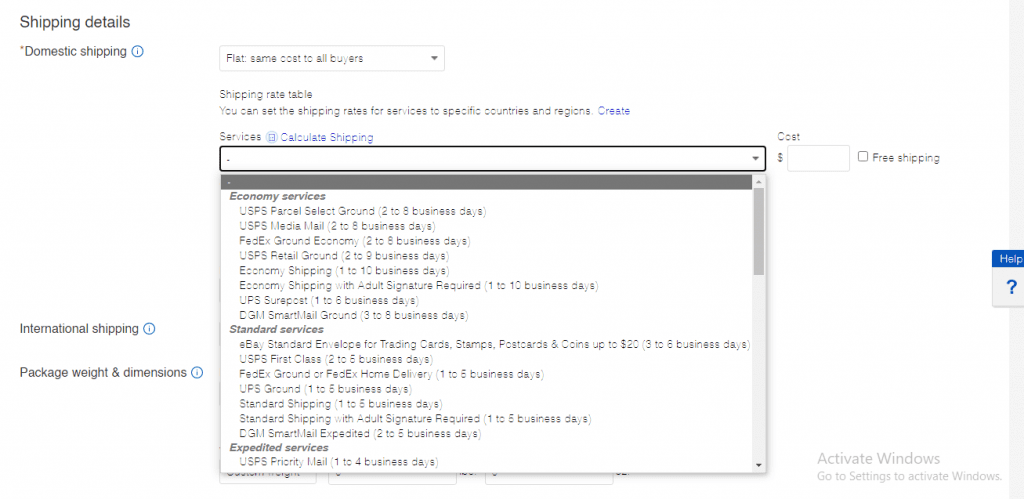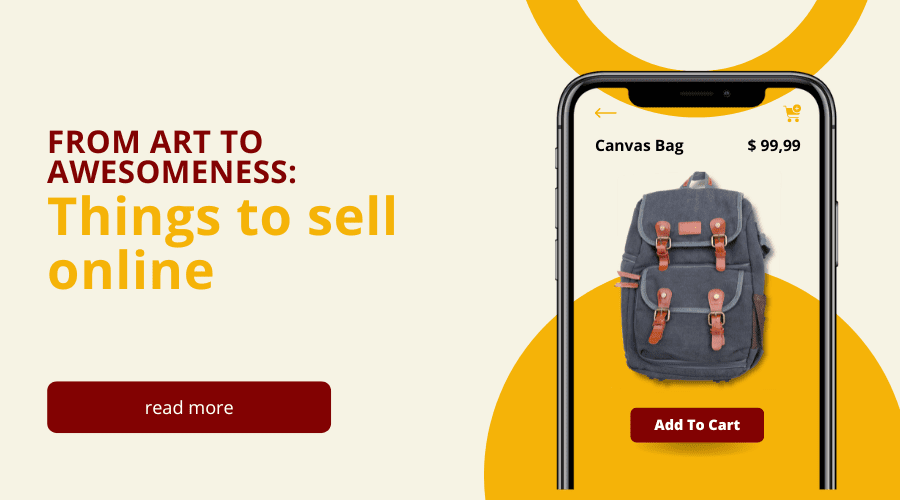- What is eBay and what can you sell?
- The eBay Market: What to expect on eBay
- How to sell on eBay USA Step By Step.
- Step 2: How to set up a seller account on eBay
- Step 2: Set up a Payment Method for Your Account
- Step 3: Create Listing
- Step 4: Take Photographs for your eBay Listing
- Step 5: List Your Product on eBay
- Step 6: eBay Shipping
- Step 6: Set Your Store’s Return Policy
- Step 7: Shipping your Products to Buyers
- Step 7: Feedback to your store
- Final Thoughts
eBay is the world’s largest online marketplace for buying and selling products. When selling on eBay, you’ll need to create a listing that accurately describes your item and offers a competitive price. In this article, we talk about how to sell on eBay USA.
eBay is one of the most popular online marketplaces in the world. It allows users to sell items they no longer need or want and make some extra cash. Here are a few tips on how to sell on eBay:
- Decide what you’re selling. eBay is a great place to start if you have something old or unwanted that you don’t know what to do with. Choose something that interests you and has the potential for high demand.
- Set a price. Don’t be tempted to lowball your item just because you think someone might buy it – set a realistic price and be prepared to haggle if someone offers too much lower.
- List your item quickly.
eBay has been a staple in the online marketplace for over 20 years. As of 2018, eBay had over 290 million active buyers and sellers worldwide. This longevity is largely due to the platform’s ease of use and its vast selection of products and services. In this article, we will discuss some tips on how to sell on eBay.
First and foremost, make sure that your listing is accurately described. Include all pertinent information such as the product specifications, condition, size, etc. Detailed pictures are also helpful in illustrating the item’s condition. Make sure to list your prices realistically; too high or too low and you could lose potential buyers. Finally, be patient; 95% of eBay transactions happen within 24 hours of being listed.
eBay, the world’s largest online marketplace, has shifted its focus away from selling items for less and more toward fixed-price or Buy It Now listings. In fact, 90% of eBay’s Gross Merchandise Volume (GMV) comes from fixed-price or Buy It Now listings. This demonstrates eBay’s dramatic shift away from its traditional auction format.
Sellers on eBay have a limitless number of choices in the setting of fixed prices or auctions, can create item listings utilizing their own product photography, may write down their own item descriptions, and can sell practically anything.
Selling on eBay Pros and Cons
- Super easy to open an account with eBay’s vast customer pool.
- A more lucrative selling method is using an auction setup.
- The protection policy is strong and seller friendly.
- High seller fees cause limited control over your listings.
- High-performing profession.
- Does not work well with bargain shoppers.
What is eBay and what can you sell?
eBay is a popular online marketplace that allows users to sell goods and services. Some of the things you can sell on eBay include items from your home, garage, and yard, as well as vintage and collectible items. You can also sell new and used books, music, movies, and games. If you have something to sale that’s not listed on eBay, you can create a listing for it and see if anyone is interested.
The eBay Market: What to expect on eBay
When you are considering what to expect from eBay, there are a few things to keep in mind. The first and most popular auction site on the internet, eBay offers buyers and sellers a global marketplace where they can buy, sell, and trade a variety of goods. With hundreds of millions of users each month, eBay is an incredibly powerful tool for finding unique items, shopping around for the best deal, and making some extra cash.
When you search for something on eBay, the site displays different results based on your location. For instance, if you’re located in the United States, results will include items available in the US market. If you’re searching for something that’s not available in the US market but is available in another country’s market (like Europe), eBay will display those results instead.
There are also several ways to narrow your search down even more.
How to sell on eBay USA Step By Step.
If you’re thinking of selling on eBay, you’re in luck! This guide will show you how to get started – step by step. First, create a listing that’s relevant to your item and appeals to buyers. Next, research your competitors and make sure your listing is up to par. Finally, promote your listing and wait for buyers to come knocking!
Step 2: How to set up a seller account on eBay

The process of signing up for a seller account on eBay is one of the reasons that it’s simple. To see the dashboard of a seller’s eBay profile, follow this step-by-step approach.
- Click on Create an Account to get started.
- Fill in the required details: your name, e-mail, and chosen password. You can also sign up with Google, Facebook, or Apple.
- If you want to create a business account, you should click on the “Create a business account” link at the top. It will take you to a form where you have to fill in your business details.
- After creating your account, eBay will log you into your new account. The site will choose a username for you, but you can change it in your account settings.
Note, Keep in mind that you may not be able to see your old customers if you change your username. So, think long and hard about what username you want to pick. As soon as you create a seller account on eBay, you’ll be introduced to the Seller Platform, where you can set up your automatic payment method, shipping details, sales tax, etc.
Step 2: Set up a Payment Method for Your Account

You need to add a method for receiving payment from sales income. You can select your preferred schedule for receiving payments. Go to Payments in My eBay. You will see Payment Choices Your eBay sales should be credited to the bank account you specify according to your schedule. You may use a PayPal account or a bank account, or both.
Your eBay account needs to have an active PayPal payment method. This will allow PayPal to deduct insertion fees and final value fees from your sales proceeds before paying into your bank account.
Step 3: Create Listing

You have now created a seller account on eBay and must now list your first item. Log in to your account on eBay and go to “Sell” in the top right-hand corner.
Step 4: Take Photographs for your eBay Listing
Take clear, high-quality pictures of your retail items. They should show an actual item, not an illustration or a 3D rendering. Get photos of your products using your phone if the camera can take quality photos. To take images from multiple angles, you ought to do it from various spots.
Make sure the lighting is good and use a good background. For best results, have product photos against a white background alongside pictures of the product in use.
Step 5: List Your Product on eBay
You can list a product on eBay by using either a Buy It Now fixed sale price listing or an auction listing. If you want a Buy It Now listing, you allow buyers to bypass the auction.

Auction-style listings allow potential buyers to make bids on your active listings, and the bidding is usually based on the current bid price. You can set a reserve price to prevent an offer of less than a minimum price from being accepted. Reserve auction sales won’t choose a winning bidder if the minimum reserve price hasn’t been reached, giving you the benefit to maintain a competitive cost.
Auctions can be a fantastic way to guarantee a sale while you wait around for only one buyer at first. You can opt to list your goods as an item to be auctioned and have the chance that it will not fetch as much money as you would like it to. list as buying it now and wait. Some products perform better in one listing type compared to the other. A good way to decide what to use is to watch what other sellers do.
You should also think about how many items you’re selling by listing them. If you use eBay, you will be limited to listing 10 items or fewer, or you may face a subscription fee and $1,000 if the amount is above that. This is often not a problem for sellers who have a few items, but it is a substantial issue for investors who would like to open and stock a large eBay store. You can ask for increases on a monthly basis. You can learn about the possibility of selling incremental increases here.
It’s important to provide a descriptive product listing for items you intend to list for sale. Your item description should include detailed information about the attributes, features, images, and price of the product itself rather than photos of a generic product.
Product identifiers, product variants, product sizes, and other such specifications should be included in your listings’ careful research to ensure that everything is linked to your name. Give your product titles careful attention, as this can prevent your merchandise from showing in search results.
eBay customers would like to find as much information as possible about an item before buying it and serving its purpose. Quality listings on eBay reduce returns and negative feedback rates. You can use the quick listing tools to help make quality listings rapidly for bestselling products. This is an easy way to get started with the many items you are selling.
Step 6: eBay Shipping
Make absolutely sure to send your products as soon as possible and in keeping with eBay s Guaranteed Delivery standards. Your products will need to meet your search requirements for same-day or one-day shipping to qualify for Guaranteed Delivery.

Step 6: Set Your Store’s Return Policy
Your store’s return policy can directly affect your merchandise production and the amount of merchandise you sell, your promotional expenses, profits, and the amount of consumer loyalty and feedback you receive. While you must comply with certain policies set in place by the web host, the eBay Money Back Guarantee policy dictates frameworks in which you receive returns for claims made under that policy. That means that a return policy is automatically entailed with your eBay store. eBay also gives you an extra three days of totally free processing if you end up returning an item. Moreover, it has a 60-day Buyer-Paid Returns Policy with improved visibility in search results.
You can also include a clause in your return policy that requires items to be returned in their original condition.
Step 7: Shipping your Products to Buyers
When you have confirmation that the buyer has paid for the product, you can go to My eBay to print a shipping label. You have many options for your shipping on eBay. This includes domestic and international shipping options, depending on your eBay store’s appeal. USPS, UPS, and FedEx are popular shipping options for the United States. The more popular shipping speeds are nearly always admitted than slow ones. According to a survey from Jungle Scout, 47% of buyers in the United States are willing to spend more money on an item to enjoy expedited shipping. Offering free shipping is a great idea if your business model allows it.
Communicate the exact shipping costs to keep your profits as high as possible. Low shipping costs will aid in buying, so be sure to decline those offers whenever possible.
Step 7: Feedback to your store
Nearly every eBay seller starts with no feedback whatsoever. Feedback, however, is indispensable for attracting buyers and retaining sales. You should list your items in the best way, take great pictures, ship promptly, and send a thank-you note in order that customers can let you know about their positive purchasing experience.
Asking eBay shark sellers to leave positive feedback on your store is a great way to gain feedback. It may not show up as seller feedback but does count toward your overall number. As a guideline, having twenty reviews is a good number to aim for.
Final Thoughts
If you want to sell items on eBay, there are a few things you need to keep in mind. First, use the right keywords and make your item listing attractive. Second, research the auction format and time period that is most appropriate for your item. Third, create a shipping schedule that makes sense for your product and customers. Fourth, monitor your auctions regularly and respond quickly to any questions or bids from buyers.














